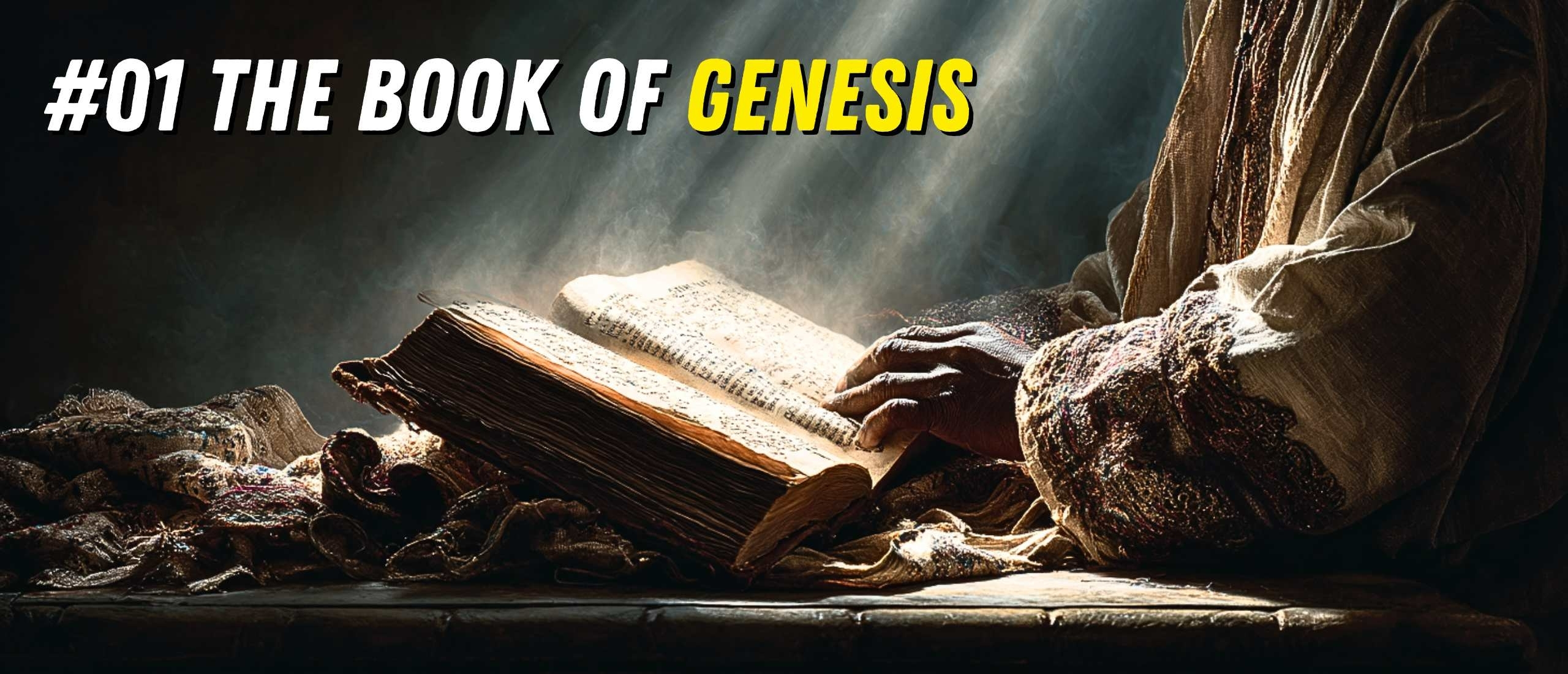
Have you ever caught yourself looking at someone and seeing only their flaws? That colleague who never seems to meet deadlines, the family member who always brings negativity to gatherings, or the neighbor whose complaints never cease? We all have a natural tendency to label people based on their most visible behaviors, don't we? But what if I told you that this habit isn't just limiting how we see others—it's diminishing our capacity to experience love, joy, and meaningful connection?
What if the key to transforming our relationships and communities lies not in trying to change others, but in fundamentally changing how we see them?
In 1 John 2:10, we find these powerful words: "Anyone who loves their brother and sister lives in the light, and there is nothing in them to make them stumble." This verse reveals a profound spiritual principle: when we choose to view others through the lens of love, we don't just illuminate their path—we illuminate our own. We don't just help them avoid stumbling—we secure our footing in the light.
Today, we'll explore what it truly means to see the best in others, even when—perhaps especially when—they're showing us their worst. We'll discover how this radical approach not only transforms the people around us but fundamentally changes who we become in the process.
The Detective for Gold in Others
Imagine for a moment how different your interactions would be if instead of focusing on what's wrong with the people around you, you became a detective for the gold in them, for the glimpses of God's image that sometimes hide beneath layers of hurt, fear, or bad habits. How might your workplace change? Your family dynamics? Your neighborhood? Your church?
This isn't just a nice theory—it's a powerful practice that has been proven to transform relationships, communities, and individual lives throughout history.
The Culture of Criticism
We live in a world that trains us to focus on the negative. Just glance at any news broadcast or scroll through your social media feed, and you'll find a steady stream of criticism, complaints, and condemnation. We live in a culture that's quick to label and slow to listen, quick to point out flaws and slow to acknowledge strengths. This environment shapes us more than we realize, training our attention to automatically scan for problems rather than possibilities.
This tendency seeps into our relationships, creating a subtle but pervasive habit of defining people by their worst moments or most annoying habits. We mentally catalog their failings, anticipate their weaknesses, and sometimes even take a strange satisfaction in being proven right when they disappoint us again. "See," we tell ourselves, "that's just how they are."
Once we've created these mental files on the people around us, we rarely bother to update them, even when evidence of growth or change is right in front of us.
The Negativity Bias
The problem goes even deeper. Our brains are wired with what psychologists call a "negativity bias"—we naturally give more weight to negative experiences than positive ones. It's a survival mechanism designed to keep us alert to threats, but in our relationships, it creates a distorted perception where a single critical comment outweighs five affirming ones, and one person's bad day becomes their defining characteristic in our minds.
And the consequences of this negative focus are profound. When we consistently view others through the lens of their shortcomings, we create an atmosphere where growth becomes nearly impossible. People tend to rise or fall to meet our expectations. When they sense our disapproval or low expectations, they often become defensive, withdraw, or simply give up trying to show us anything different.
The labels we apply become self-fulfilling prophecies.
Michael's Transformation
Let me tell you about Michael, a tenth-grade student who had been labeled a "troublemaker" since elementary school. By the time he entered Mrs. Patterson's English class, he had accumulated a thick disciplinary file and a reputation that preceded him into every classroom. Teachers expected disruption, and Michael rarely disappointed. He had embraced the identity that had been assigned to him—if everyone saw him as a problem, why bother trying to be anything else?
But Mrs. Patterson took a different approach. On the first day, while other teachers were reviewing rules and consequences, she pulled Michael aside. "I've heard you have a great sense of humor and that you're incredibly creative," she told him. "I'm excited to see how you'll contribute to our discussions this year."
Michael was suspicious at first. Was this some kind of trick? But Mrs. Patterson consistently found and highlighted strengths that other teachers had overlooked—his insightful comments during discussions, his creative approaches to assignments, and his natural leadership when working in groups. She wasn't ignoring his disruptive behaviors, but she refused to let those behaviors define him.
By mid-semester, Michael was no longer the class disruptor but one of its most engaged participants. His grades improved, and disciplinary issues decreased dramatically. When asked what made the difference, Michael said simply, "Mrs. Patterson saw something in me that no one else bothered to look for. I didn't want to let her down."
Jesus' Pattern of Redemptive Vision
This story illustrates a spiritual principle that Jesus demonstrated throughout his ministry. Think about how he approached Zacchaeus, the corrupt tax collector shunned by his community. Rather than focusing on Zacchaeus's dishonesty and exploitation, Jesus saw his potential for generosity and justice. "Today salvation has come to this house," Jesus declared, speaking a new reality into existence before Zacchaeus had done anything to prove his change of heart. And in response to being seen differently, Zacchaeus became different, promising to give half his possessions to the poor and pay back four times what he had defrauded.
Or consider how Jesus approached the Samaritan woman at the well—a woman defined by her community through the lens of her moral failures and marital history. Jesus acknowledged her situation without condemning her, then shifted the conversation to deeper spiritual truths. He saw her not as a scandal but as an evangelist in waiting. And that's exactly what she became, leading her entire village to faith.
Even Peter, who would deny Jesus three times, was not defined by his failure. Jesus looked at impulsive, inconsistent Simon and renamed him Peter, "the rock." He spoke to Peter's potential rather than his present reality. And eventually, Peter grew into that identity, becoming the bold, faithful leader of the early church.
Seeing Through God's Eyes
These biblical examples reveal a consistent pattern: Jesus had a remarkable ability to see people not as they were but as they could be. He addressed the reality of their current condition while simultaneously speaking to the possibility of transformation. And in doing so, he created the very conditions in which that transformation could occur.
This approach isn't just a nice strategy—it's deeply rooted in our theology. Scripture tells us that every person is created in God's image, bearing the divine imprint regardless of how obscured it might have become. When we look for the best in others, we're not fabricating something that isn't there—we're recognizing the remnant of God's design that persists despite the effects of sin and brokenness.
We're choosing to focus on what God sees when He looks at every human being: a beloved creation worth redeeming at the highest possible cost.
Think about it this way: If God looked at humanity and saw only our failures, weaknesses, and rebellion, the cross would never have happened. But instead, "God demonstrates his love for us in this: While we were still sinners, Christ died for us" (Romans 5:8). God saw something in us worth saving, worth loving, worth dying for—even when we were at our worst.
When we look for the best in others, we're practicing the same kind of redemptive vision that motivated Christ's sacrifice.
Practical Steps to Transform Your Vision
So, what does it look like to practically apply this principle in our daily relationships? How do we train ourselves to see the opposite of what someone might be showing us—to look beyond current behavior to divine potential?
Practice Intentional Attention
First, we need to practice intentional attention. Our focus naturally gravitates toward problems and irritations, so we must deliberately redirect it toward strengths and possibilities. This requires mindfulness—a conscious decision to notice what's good, what's working, what's praiseworthy in the people around us.
Philippians 4:8 provides a helpful framework: "Finally, brothers and sisters, whatever is true, whatever is noble, whatever is right, whatever is pure, whatever is lovely, whatever is admirable—if anything is excellent or praiseworthy—think about such things."
Try this exercise: Choose a person with whom you have a challenging relationship. Each day for a week, identify and write down one positive quality you observe in them, one contribution they make, or one strength they demonstrate—no matter how small. At the end of the week, review your list. Has your perception of this person shifted at all? Have your interactions changed as your focus has shifted?
Become Curious Rather Than Critical
Second, we must become curious rather than critical. When someone behaves in ways that frustrate or disappoint us, our natural response is judgment. But what if we replaced judgment with genuine curiosity? Instead of thinking, "There they go again—how annoying," what if we wondered, "What might be happening in their life that's contributing to this behavior? What need might they be trying to meet?"
This shift from criticism to curiosity doesn't excuse harmful behavior, but it does create space for understanding and empathy. It moves us from seeing people as problems to be solved to seeing them as complex individuals navigating their struggles and challenges. And when people feel understood rather than judged, they become much more open to connection and change.
Practice Verbal Appreciation
Third, we need to practice verbal appreciation. It's not enough to notice the good in others—we need to name it explicitly. The power of articulated affirmation is remarkable. When we put words to the potential or goodness we see in someone, we help bring it into fuller expression. It's like watering a plant—whatever receives our attention and affirmation tends to grow and flourish.
This kind of affirmation isn't manipulation or flattery. It's seeing with spiritual eyes—recognizing glimpses of God's design even when they're partially hidden. It's speaking to the person's God-given identity rather than their temporary behavior. And there's something powerful about having someone else articulate the good they see in us—it often reveals aspects of ourselves we couldn't recognize on our own.
Extend High Expectations
Fourth, we need to extend the gift of high expectations. People generally rise or fall to meet our expectations. When we expect the worst from someone, we subtly communicate that message in countless ways, and they often fulfill our negative prophecy. But when we genuinely expect the best, when we communicate, both verbally and non-verbally, our confidence in someone's capacity to grow and contribute, we create an environment where transformation becomes much more likely.
Jesus consistently held high expectations for his disciples, even when they failed repeatedly to understand his teachings or demonstrate the faith he was cultivating in them. "You will do even greater things than these," he told them, pointing to the miracles they had witnessed him perform. His confidence in what they would become sustained them through their doubts and failures.
Practice Generous Interpretation
Fifth, we must practice generous interpretation. When someone's words or actions could be interpreted in multiple ways, we have a choice. We can assume the worst—that they intended to hurt, inconvenience, or disrespect us. Or we can assume the best—that they had positive or at least neutral intentions, even if their execution was flawed.
This doesn't mean ignoring patterns of harmful behavior, but it does mean giving people the benefit of the doubt whenever possible. 1 Corinthians 13:7 tells us that love "always protects, always trusts, always hopes, always perseveres." Part of loving others is choosing to believe the best about their intentions rather than assuming the worst.
Take a Long-Term Perspective
Finally, we need to take a long-term perspective. Change rarely happens overnight, whether in our own lives or the lives of others. When we're looking for the best in others, we're participating in a gradual process of transformation that may include setbacks, slow progress, and moments of discouragement. But just as a gardener plants seeds with faith in the eventual harvest, we continue to see and speak to the divine potential in others, trusting God's timing rather than demanding immediate results.
Overcoming Resistance and Objections
How do we overcome resistance to this way of seeing? Because if we're honest, there's something in us that resists this approach. It can feel naive or foolish to look for the best in someone who has repeatedly shown us their worst. It can seem risky to extend trust that might be betrayed or to expect change that might never come.
One common objection is that this approach seems to ignore or minimize problematic behavior. "Aren't we just enabling bad conduct if we focus on the positive?" This is a legitimate concern, but it's based on a misunderstanding. Seeing the best in others doesn't mean we don't address harmful behaviors or establish appropriate boundaries. It means we address those behaviors without defining the person by them.
We can say, "That comment was hurtful," without saying, "You are a hurtful person." We can establish consequences while still believing in someone's capacity for growth and change.
Rachel's Story: Grace in Difficult Relationships
Let me tell you about Rachel, whose story illustrates the power of this principle even in deeply challenging relationships. Rachel's mother had been emotionally abusive throughout her childhood, criticizing her appearance, belittling her achievements, and frequently comparing her unfavorably to her siblings. By the time Rachel reached adulthood, their relationship was strained to the breaking point.
Through her faith journey and work with a Christian counselor, Rachel began to understand that her mother's criticism stemmed from deep insecurities and harsh parenting she had experienced. This understanding didn't excuse the behavior, but it helped Rachel see beyond it to the wounded, fearful woman behind the critical exterior.
She began to notice and affirm the glimpses of love and care that occasionally showed through—her mother's excellent cooking, her clever problem-solving, her loyalty to long-time friends. Rachel maintained healthy boundaries and had realistic expectations, but her shift in perspective gradually changed their dynamics.
"Looking for the best in my mother didn't instantly fix our relationship," Rachel shared, "but it freed me from being defined by her treatment of me. I'm no longer just a reaction to her criticism. I've become someone who can give grace even when it's not deserved—and that's changed every relationship in my life, not just the one with my mother."
The Ripple Effect of Redemptive Vision
Rachel's story points to perhaps the most significant impact of choosing to see the best in others: it transforms not just our relationships but our very selves. When we consistently look for divine potential in the people around us, we develop spiritual vision that changes how we perceive everything. We become less reactive, more compassionate, less easily offended, and more generous in our assumptions.
This transformation isn't just personal—it has the power to ripple outward into our families, workplaces, churches, and communities. Imagine a family where parents consistently see and speak to the best in their children, where siblings look for strengths rather than weaknesses in each other, where failures are viewed as temporary setbacks rather than defining characteristics.
Or picture a workplace where leaders focus on developing employees' strengths rather than just correcting their weaknesses, where colleagues celebrate each other's contributions rather than competing or criticizing. Research consistently shows that such environments produce not just greater job satisfaction but higher productivity, innovation, and employee retention.
Living in the Light
As we conclude, let's return to our key verse: "Anyone who loves their brother and sister lives in the light, and there is nothing in them to make them stumble" (1 John 2:10). This scripture reminds us that choosing to see the best in others isn't just something we do for their benefit—it's an act of self-preservation. When we train ourselves to look for divine potential rather than focusing on flaws and failures, we're choosing to "live in the light."
We're creating conditions where we are less likely to stumble into judgment, bitterness, or contempt.
This practice isn't always easy. It requires intentionality, courage, and a willingness to see differently than the culture around us. It means developing spiritual vision that can perceive what isn't yet fully manifest. It means holding onto hope when evidence of transformation is slow to appear. But it's a practice that aligns us with God's perspective and positions us to participate in His redemptive work.
Your Challenge This Week
So I challenge you: Choose one person in your life—perhaps someone you've struggled to see in a positive light. This week, commit to looking for glimpses of God's image in them. Notice their strengths, affirm their contributions, and speak to their potential rather than their limitations. Be specific and sincere in your affirmation.
Watch for small changes in your interactions, but hold your expectations loosely. Remember that your primary goal isn't to change them but to develop your capacity to see as God sees.
Because when we truly learn to see the best in others, to look beyond their present behavior to their divine potential, we don't just change our relationships. We change ourselves. We develop spiritual eyes that can perceive beauty where others see only brokenness, potential where others see only problems. We participate in God's redemptive vision for humanity.
And in the process, we find ourselves walking more securely in the light, less prone to stumbling, more aligned with the heart of Christ.
How might your relationships change if you consistently looked for and affirmed the best in the people around you, even when—especially when—they're showing you their worst? What if you became known as someone who sees potential where others see only problems? How might that reputation change not just your influence but your very identity?
The answer to these questions lies not in theory but in practice. Start today. Start small. Start with one person, one interaction, one choice to see the opposite of what's being shown to you. And watch as God uses your redemptive vision to transform not just others, but yourself in the process.
Stay Encouraged Daily
Would you like to receive daily encouragement through faith-filled videos? Subscribe to our YouTube channel and walk with us on this journey of hope.
❤️ Subscribe to Our YouTube Channel










